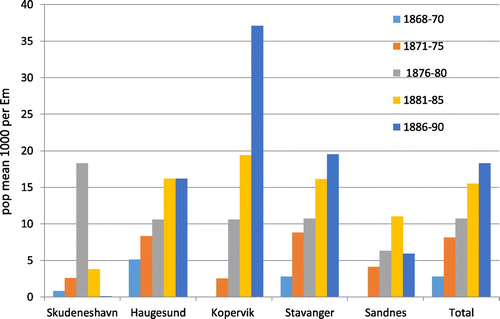Figures & data
Figure 1. Stavanger County/Søra-field showing the Boknafjord in the centre. To the north of that is the Karmsund strait, and the Stavanger area is south of the Boknafjord.

Figure 2. Growth in percentage terms (average per annum) of native population in Norway, in rural districts in Norway, towns in Norway, Stavanger County and the area covered by this study 1835–1845, 1845–1855, 1855–1865, 1865–1875, 1875–1891.
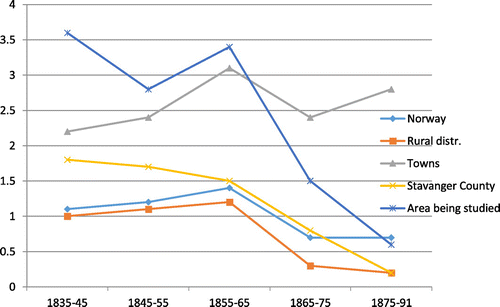
Figure 3. Percentage average annual population growth 1855–1891 in Boknafjord N, Boknafjord S, Skudeneshavn and Kopervik (1855–1865 Skudeneshavn only), Sandnes, Haugesund, Stavanger.
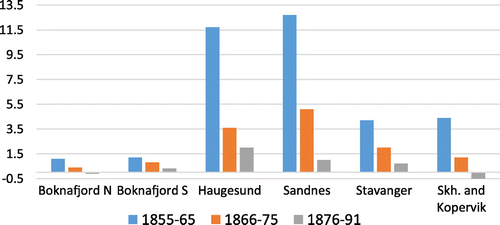
Table 1. Marriages per thousand of the mean population between 1855 and 1890
Figure 4. Births and deaths per 1,000 of the mean population in the years 1855–1891 Boknafjord N, Boknafjord S, Skudeneshavn and Kopervik (1855–1865 only Skudeneshavn), Sandnes (1866–1890), Haugesund, Stavanger, towns and rural communities in Norway.
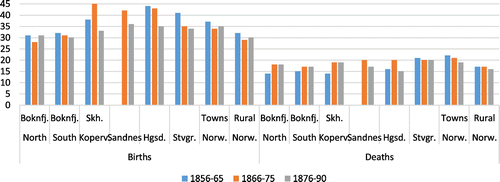
Figure 5. Natural population growth in the years 1855–1891, Boknafjord N, Boknafjord S, Skudeneshavn and Kopervik (1855–1865 Skudeneshavn only), Sandnes, Haugesund, Stavanger, towns and rural communities.

Figure 6. Net migration 1856–1865, 1866–1875, 1876–1891 in Boknafjord N, Boknafjord S, Haugesund, Sandnes, Stavanger, Skudeneshavn and Kopervik (1856–1865 only Skudeneshavn). Absolute numbers.
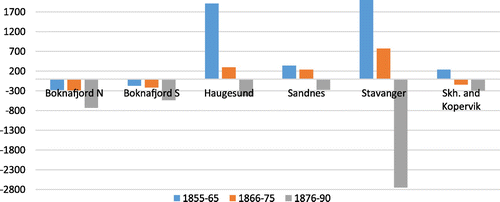
Figure 7. Females per 1,000 males in 1845, 1855, 1865, 1875 and 1891 in rural communities in Norway, Boknafjord N, Boknafjord S.
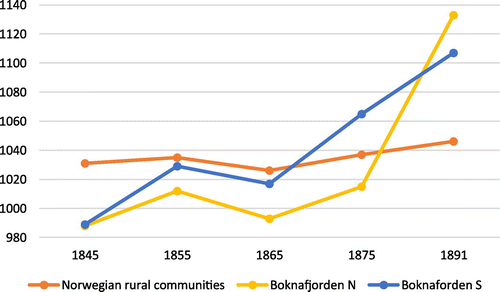
Figure 8. Females per 1,000 males in the towns of Norway, in Skudeneshavn and Kopervik, Haugesund, Stavanger and Sandnes in 1845, 1855, 1865, 1875 and 1891.
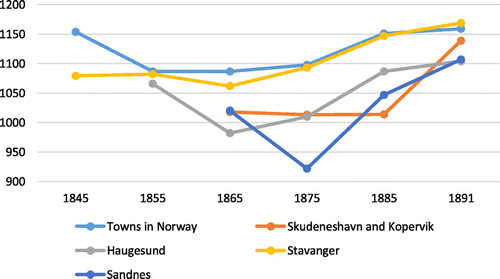
Figure 9. Inhabitants in the rural communities of the area being studied who had been born in municipalities in which they were currently resident, those born in a different rural municipality, those born in a town or abroad, 1865, 1875, and 1890. Percent.
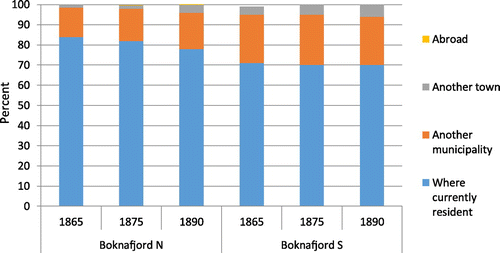
Figure 10. Inhabitants of towns in Stavanger County (other than Egersund and Sogndalstrand) who were born in the communities where currently resident, those born in a different town, those born in a different rural municipality and those born abroad, 1865, 1875, 1885 and 1890. Percent. *1865: Skudeneshavn, 1885: Kopervik.
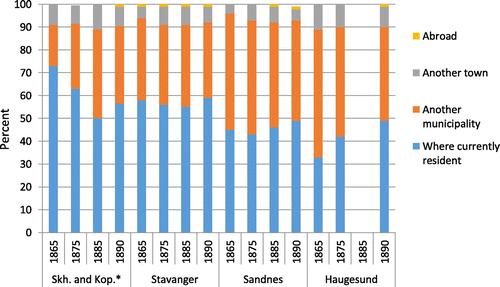
Table 2. Male and female emigrants from Norway, 1866–1890 (relative numbers)
Table 3. Emigrated males per 1,000 females, 5-year intervals 1866–1890 (relative numbers)
Figure 11. Emigration from the area studied to countries outside Europe 1868–1890. Absolute numbers, annual average over 5 year periods except for 1868–70.
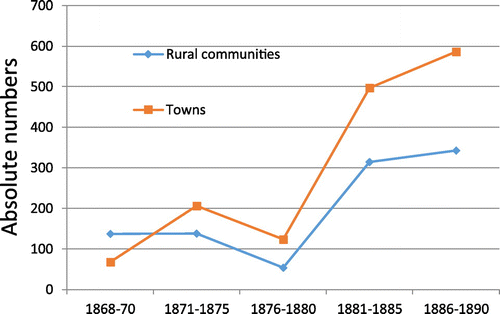
Figure 12. Emigration from the rural municipalities in the area being studied to countries outside Europe 1868–1890. Relative figures for five-year periods.
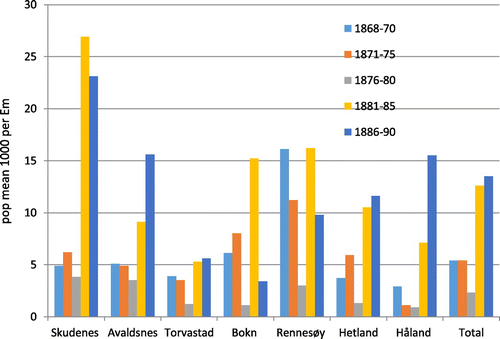
Figure 13. Emigration 1868–1890 from towns in the area being studied to countries outside Europe. Relative numbers per five-year period.
